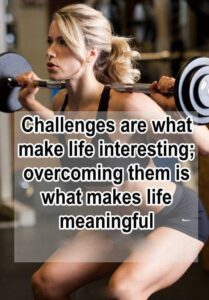Connection between the Media and Body Image
The relationship between media and body image is complex and multifaceted, with far-reaching implications for individuals’ self-perception, mental health, and well-being. While the media serves as a powerful tool for communication, entertainment, and cultural expression, its portrayal of idealized body standards has a profound influence on societal perceptions of beauty and self-worth.
One of the most concerning aspects of media influence on body image is the perpetuation of narrow and unrealistic beauty ideals. Across various media platforms, from magazines and advertisements to television shows and social media, individuals are bombarded with images of thinness, flawless skin, and symmetrical features as the epitome of attractiveness. These representations create an unattainable standard of beauty that many individuals, particularly young people, feel pressured to emulate.

The impact of media on body image
The prevalence of digital manipulation and photo editing techniques in media exacerbates this issue by presenting airbrushed and digitally altered images that distort reality. These images not only set unattainable standards but also erode trust in one’s own perception of beauty, leading to feelings of inadequacy and self-doubt.
The impact of media on body image is particularly pronounced among adolescents and young adults, who are in the process of forming their identities and developing a sense of self. Research has consistently shown a correlation between exposure to idealized media images and negative body image outcomes, including body dissatisfaction, disordered eating behaviors, and low self-esteem.
The media’s portrayal of beauty is often exclusionary and homogenous, perpetuating stereotypes and marginalizing individuals who do not fit within conventional beauty norms. This lack of diversity reinforces harmful beauty standards rooted in certain ideals, marginalizing people of color, individuals with disabilities, and those whose bodies deviate from societal norms.
It is essential to acknowledge that media is not inherently negative and can also be a force for positive change. Increasinglyent, there is a growing movement toward promoting body positivity, diversity, and inclusivity in media representations. Brands, influencers, and content creators are embracing authenticity and featuring more diverse body types, skin tones, and identities in their campaigns and content.
Social media platforms have provided a platform for marginalized voices to challenge traditional beauty standards and promote body acceptance and self-love. The rise of body-positive influencers and online communities has created spaces where individuals can find support, validation, and representation outside of mainstream media channels.
Despite these positive developments, the media landscape remains fraught with challenges, and there is still much work to be done to dismantle harmful beauty ideals and promote a more inclusive and empowering portrayal of bodies in the media.
As consumers of media, it is crucial to develop critical media literacy skills and question the messages and representations presented to us. By actively challenging unrealistic beauty standards and seeking out diverse and authentic media content, we can mitigate the negative impact of media on our body image and cultivate a more positive and accepting relationship with our bodies.
Furthermore, it is incumbent upon media creators, advertisers, and policymakers to take responsibility for the messages they propagate and prioritize diversity, authenticity, and inclusivity in their representations. By promoting a more diverse and empowering portrayal of bodies in the media, we can foster a culture that celebrates the inherent beauty and worth of all individuals, regardless of their appearance or identity.
Conclusion
In conclusion, the media exerts a powerful influence on societal perceptions of beauty and body image, shaping individuals’ self-perception and contributing to broader cultural ideals of attractiveness. While the media landscape is rife with challenges, there is also an opportunity for positive change. By fostering critical media literacy skills, promoting diversity and inclusivity in media representations, and challenging unrealistic beauty standards, we can work toward creating a media landscape that celebrates the diversity and inherent worth of all bodies.